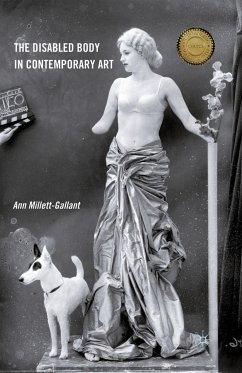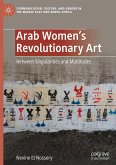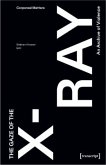"A significant, durable contribution. Highly recommended." - CHOICE
"There is little if any systematic work on the intersection between art history and disability studies. When a theory is broached, it usually comes down to the accusation that art has participated in the history of discrimination against disabled people. Millett-Gallant is able to discuss troubling aspects concerning disability in the history of art, and yet she finds a way to describe how these same troubling aspects resist discrimination. Hers is a complex idea of aesthetic representation, and her analysis does not fail to respect this complexity but, rather, dwells in it by providing a dense articulation of works of art, their allusions, and meanings. The book is of critical importance. It is the first of its kind." - Tobin Siebers, University of Michigan
"An important contribution to the growing field of disability studies, Millett-Gallant brings art history into contact and collaboration with the perspectives of disabled models, artists, and critics. A must-read for everybody who is interested in cultural representations of disability." - Petra Kuppers, University of Michigan and author of The Scar of Visibility: Medical Performances and Contemporary Art
"Millett-Gallant's book addresses a significant gap in both art history and disability studies through her thoughtful analysis of contemporary art that engages the extraordinary body. That enterprise is groundbreaking forboth fields, in part because there exists no other study of this kind, but also because Millett-Gallant refuses to adapt an interpretive method that reinforces binaries, importantly pointing out that hierarchical divides such as disabled/nondisabled (when considering artists) and liberating/derogatory (when considering art) can effectively limit understanding the subversive potential of disability's presence in contemporary art. Rather, her assertion that its reconsideration must of necessity be dialogic effectively demonstrates the peculiar power disability has across multiple genres of visual representation, including photography, sculpture, painting, and performance art. For Millett-Gallant, these images resist categorization; recall and respond to their own lineage in medical and popular representation; and recast the disabled body anew in social performance. Calling on her reader to resist an interpretive paternalism, she curates a fascinating and first of its kind exhibition within the pages of this book." - Ann M. Fox, Associate Professor of English, Davidson College
"There is little if any systematic work on the intersection between art history and disability studies. When a theory is broached, it usually comes down to the accusation that art has participated in the history of discrimination against disabled people. Millett-Gallant is able to discuss troubling aspects concerning disability in the history of art, and yet she finds a way to describe how these same troubling aspects resist discrimination. Hers is a complex idea of aesthetic representation, and her analysis does not fail to respect this complexity but, rather, dwells in it by providing a dense articulation of works of art, their allusions, and meanings. The book is of critical importance. It is the first of its kind." - Tobin Siebers, University of Michigan
"An important contribution to the growing field of disability studies, Millett-Gallant brings art history into contact and collaboration with the perspectives of disabled models, artists, and critics. A must-read for everybody who is interested in cultural representations of disability." - Petra Kuppers, University of Michigan and author of The Scar of Visibility: Medical Performances and Contemporary Art
"Millett-Gallant's book addresses a significant gap in both art history and disability studies through her thoughtful analysis of contemporary art that engages the extraordinary body. That enterprise is groundbreaking forboth fields, in part because there exists no other study of this kind, but also because Millett-Gallant refuses to adapt an interpretive method that reinforces binaries, importantly pointing out that hierarchical divides such as disabled/nondisabled (when considering artists) and liberating/derogatory (when considering art) can effectively limit understanding the subversive potential of disability's presence in contemporary art. Rather, her assertion that its reconsideration must of necessity be dialogic effectively demonstrates the peculiar power disability has across multiple genres of visual representation, including photography, sculpture, painting, and performance art. For Millett-Gallant, these images resist categorization; recall and respond to their own lineage in medical and popular representation; and recast the disabled body anew in social performance. Calling on her reader to resist an interpretive paternalism, she curates a fascinating and first of its kind exhibition within the pages of this book." - Ann M. Fox, Associate Professor of English, Davidson College








